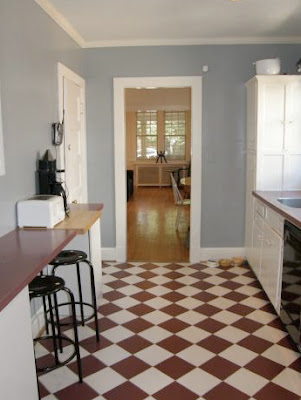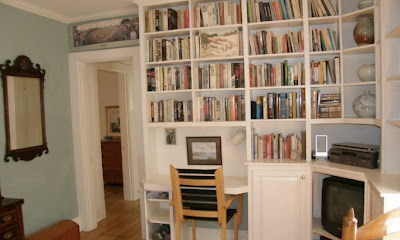 By Franklin Schneider
By Franklin Schneider




 By Franklin Schneider
By Franklin Schneider




 Beth Herman
Beth Herman
An estimated 50,000 of them pepper New Zealand's pristine cliffs and shores, historically cobbled from fibrolite (asbestos sheets), corrugated iron, old timber or even recycled trams, and devoid of electricity and running water. Since the mid-20th Century, and though most have received modern updates with some even evolving into multimillion dollar escapes, the Kiwi bach (pron. "batch") - a kind  of eclectic vacation bungalow - has been the go-to domicile for thousands of New Zealanders seeking solace from the daily grind, usually with family, extended family and good friends in tow.
of eclectic vacation bungalow - has been the go-to domicile for thousands of New Zealanders seeking solace from the daily grind, usually with family, extended family and good friends in tow.
For the 2011 U.S. Department of Energy’s Solar Decathlon’s Team New Zealand, reimagining the bach in a sustainable light occurred to a core of four Victoria University of Wellington School of Architecture students a couple of years ago, according to team spokesperson Nick Officer. The concept of competition was nary a glint in their eyes, however. 
“It was just a project for us, but the university really liked it and pushed us to submit a proposal,” Officer said of their subsequent entry into the Decathlon, where students are charged with creating and manipulating an affordable (under $250,000) net zero energy house. “From there it just snowballed,” he affirmed, noting New Zealand is the first entry from the Southern Hemisphere in the event’s history.
With construction commencing in February and ending in May, and following an 18-day open house that hosted 20,000 visitors in Wellington, “First Light”—aptly named for the country that receives the planet’s first rays of daylight— began its painstaking 30-day crossing to the United States. Transiting the Panama Canal, and on to Philadelphia, the house arrived in D.C. by truck – in six containers. Reassembled at the National Mall in just under seven days by 26 dedicated though sleep-deprived students (the trip from New Zealand took 30 hours with a Los Angeles stopover), Team New Zealand competes against 19 other teams in 10 categories, including architecture, market appeal and engineering, in pursuit of solar gold (first place).
Outside In
Favoring an indoor/outdoor motif, Officer said New Zealanders are very passionate about their landscape and environment, in this case teasing them all the way through the 800 s.f. house. Sustainable decking runs both outdoors and indoors, with large, triple-glazed windows and a mammoth skylight exposing occupants to open sky. Bi-folding doors on both sides of the house open its interior to air and light, and a striking, shade-producing timber canopy above the house’s waterproof membrane provides independent support for a six kilowatt solar array containing 28 polycrystalline photovoltaic panels and 40 evacuated tube solar collectors. An interactive energy system monitors and displays the house’s output vis-à-vis weather conditions.
With “First Light” created as a year round residence, as opposed to a traditional Kiwi bach used in summer, concrete slab flooring beneath the space’s largest windows passively absorbs and stores the heat of day, retaining it for comfort in cooler months. A reverse-cycle heat pump affords energy-sensitive heating and cooling,
“We’ve got a foot of sheep’s wool in between the walls,” Officer said in reference to the space’s native resource-type insulation, giving it an R-value of 6, “almost like wrapping the house in a wooly blanket.”
Employing “sustainable, renewable, elemental materials,” Officer cited the use of timber that includes native New Zealand Rimu garnered from an old sheep shearing shed, Western Red Cedar for the exterior—a detachable cladding system was developed by the team, and  sustainably-sourced Pinus radiata—a species of pine—used for structural elements and interior linings.
sustainably-sourced Pinus radiata—a species of pine—used for structural elements and interior linings.
Innovations such as a clothes drying cupboard, where solar-heated water is propelled through rails and a fan accelerates drying, and multifunctional rooms with custom, adaptable furniture—including bunk beds and a sofa bed—plus a master bedroom, help ensure family and guests are not left behind or are without conveniences. “It’s about a lot of people able to be in one space, enjoying each other’s company,” Officer said of the historical Kiwi bach concept. Following the Decathlon, "First Light" will travel back to New Zealand where it is slated to become a private home.
Graduating this December with a master’s degree in architecture, Officer indicated it’s been a busy year and he’s not had time to give much thought to where he’ll practice his craft. “I’ll go anywhere in the world to work on sustainable projects,” he said. 




photos courtesy of Kelly Matlock and Team New Zealand
 A church-turned-condominium project by developer Bozzuto and architect
A church-turned-condominium project by developer Bozzuto and architect  After HPRB approves the entire revised design, Bozzuto will then file its application with the Board of Zoning Adjustment, said Wagner. In July, ANC secretary Jack McKay said that the ANC, which has not yet opined on the matter, is most interested in the rear setback and rear access of the property.
After HPRB approves the entire revised design, Bozzuto will then file its application with the Board of Zoning Adjustment, said Wagner. In July, ANC secretary Jack McKay said that the ANC, which has not yet opined on the matter, is most interested in the rear setback and rear access of the property. By Franklin Schneider
By Franklin Schneider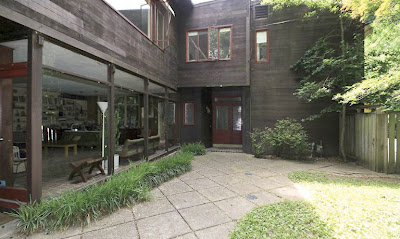
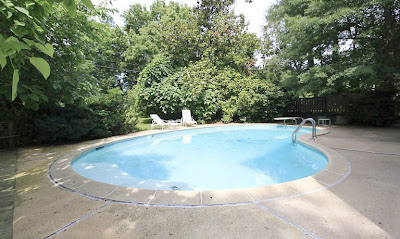


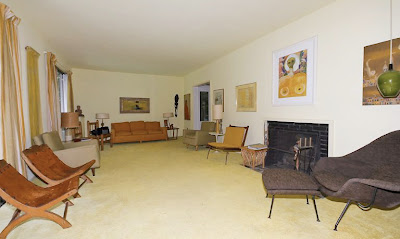

Its marble headquarters at 2101 Constitution Avenue NW was built in 1924 by celebrated architect Bertram Grosvenor Goodhue, who died four days prior to its dedication. Though it continues to serve as an epicenter of the elite in times of war and peace, the National Academy of Sciences building’s programmatic mission had changed dramatically in recent years, according to Quinn Evans Architects Principal Larry Barr.
Undergoing three more building campaigns and sequential additions of a west wing in 1962, an east wing in 1965 and a 700-seat auditorium in 1970, the 182,000 s.f. space had been compromised in recent years by an insufficient infrastructure that resulted in burgeoning maintenance fees. Tantamount to that, the organization’s modus operandi had changed to include substantial public engagement at hearings and presentations, its conference rooms and public spaces markedly unequal to the task.
“As recently as 10, 15, 20 years ago, an awful lot of NAS’ work was behind closed doors,” Barr said. “It was time to bring the facility into the 21st Century,” a project begun in 2007 and slated for completion in April, 2012.
Citing elements and more that were part of a 2006 master plan, including relocating and/or expanding conference rooms, reinterpreting public access, evolved wayfinding and circulation,  and improved ADA-compliancy (some of the Academy's nearly 2,200 esteemed members and 400 foreign associates, if visiting, had to enter indirectly on C Street through the back), Barr said encroaching on the building’s historic fabric was certainly at issue. “It was turning the first floor into a public floor that was the driver,” he added, noting additional space needed to be captured without expanding beyond perimeter walls.
and improved ADA-compliancy (some of the Academy's nearly 2,200 esteemed members and 400 foreign associates, if visiting, had to enter indirectly on C Street through the back), Barr said encroaching on the building’s historic fabric was certainly at issue. “It was turning the first floor into a public floor that was the driver,” he added, noting additional space needed to be captured without expanding beyond perimeter walls.
To that end, utilizing east and west courtyards that accrued to related wings, the architects infilled each space with a roof and skylights so they became suitable, informal public gathering spaces for hearing breaks or cocktail parties. Three new conference rooms have been established on the main floor, two accommodating up to 150 people each, with a smaller space seating 50.  The renovation also reintroduces two historic gallery spaces to showcase art.
The renovation also reintroduces two historic gallery spaces to showcase art.
According to Quinn Evans Project Manager Tom Jester, a considerable number of half-levels needed to be addressed to make the building handicap-accessible. Accordingly, elevators and ramps are being installed, with front-of-the-building access achieved by the removal of an existing window, and wall beneath the window, down to the ground. A bronze door will be added to match other historic bronze doors throughout the structure, facilitating access to an entry vestibule and elevator that goes to the main floor lobby.
Preserve and protect
With the 1924 portion of the building most historically significant, including the Great Hall which contains the behemoth rotunda, integrating elements like fire protection, updated electrical systems and data systems into historic spaces where there isn’t a great deal of cavity space, or access behind walls, was a significant design challenge. Identifying “creativity” as a key component in a successful restoration/renovation of this nature, Jester said specific variances had to be obtained to preserve the work of original architect Goodhue and his team, which included bronze sculptor Lee Lawrie—who created the building’s bronze spandrel panels, 
Akoustolith, a widely used porous ceramic material employed in the early 20th Century to moderate noise, was used in the building's Great Hall and contains decorative painting and gilding. With the team in the process of conserving and restoring those surfaces, Jester said they will be brought much closer to their original appearance. Untouched since original construction, the material had fallen victim to cigarette smoke and other environmental abrasives—emblematic of its age.
Under the sun
In regard to NAS’ exterior, Barr said the building was generally in good condition, with repointing underway and a major concern expressed by the team that over time mortar had been replaced with an inappropriate 
Restoring the building’s original steel windows while preserving the 1924 building’s historic character was also important— the decision made to retain them but apply a low-emission glaze. 
Historic lighting fixtures are being retrofitted to incorporate LED’s, where possible, on the path to LEED Silver certification—a requirement for the $45 million NAS project as it is financed with city bonds. The restoration/renovation is the District’s first project to be reviewed under the lens of the D.C. Green Building Act.
Citing the efficiency and cooperative spirit of an extensive team with an aggressive schedule, which includes The Gilbane Building Company and The Christman Company, Barr has summarized the NAS project as “a very challenging intellectual exercise” in its complexity, allowing for 21st Century activity without compromising historic integrity. “In the end it’s going to be a great building for the client,” he said.
 By Franklin Schneider
By Franklin Schneider

